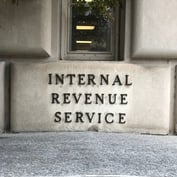This article is the last in a three-part series. Part one is available here and for part two, go here.
Deferred compensation plans can be complex, particularly for sponsors that offer several different types of plans. As the complexity of plan administration rises, so does the risk of making an error.
Below are ten types of errors commonly seen deferred compensation plan administration and the corrections that are needed to fix them.
There are also descriptions of Department of Labor and IRS correction programs that sponsors and administrators can use to address errors.
1. Missed deferral opportunity for excluded employees (including employer matches)
This type of failure usually occurs in two kinds of circumstances:
-
When employees are not provided with timely notification of their eligibility to participate in a plan (often because the plan excludes the employee from an automatic enrollment for some period of time); or
-
When the employer fails to process a participant’s election to defer in a timely manner.
The employee or participant may also miss employer matches as a consequence of the delayed participation.
To correct, the employer usually makes a qualified nonelective contribution (QNEC) in an amount equal to 50 percent of the employee’s or participant’s missed deferral opportunity (40 percent for a missed after-tax contribution) applying the participant’s elected deferral amount, or the plan’s average deferral percentage rate, whichever is applicable or appropriate. To this, the employer must include the missed match, which must be calculated using 100 percent (not 50 percent or 40 percent) of the missed deferral or after-tax opportunity, as well as applicable earnings.
However, under Revenue Procedure 2013-12, the missed match contribution now need not be a QNEC, which requires immediate vesting, withdrawal restrictions, and an inability to fund with forfeitures, unless the plan is a safe harbor 401(k) plan. The missed contributions may now be made as a non-QNEC, employer corrective contribution that follows the vesting schedule in the employer’s plan. Corrections for this violation are also now available for 401(k) safe harbor plans under Code section 401(k)(13).
The correction process for Code section 401(k)(12) plans was carried forward into Revenue Procedure 2013-12, which says that a missed deferral is deemed equal to the greater of 3 percent or the maximum deferral percentage rate that is at least as favorable as 100 percent of the elective deferral made by the employee. Note that if the failure occurs for a period that does not extend past the first day of the first plan year that begins after the date on which the first deferral would have been made (but for the failure), then the missed deferral is deemed equal to 3 percent.
However, if the failure occurs during a period subsequent to this, the missed deferral for each subsequent plan year will be deemed equal to the qualified percentage specified in the plan document in order to comply with Code section 401(k)(13(C)(iii).
If any contribution error affects a terminated participant, the employer can apply the de minimis distribution rule (differences of $75 or less may be disregarded) to any corrective contribution. This is unique because the de minimis rule is normally limited to use with corrective distributions only — not as to contributions.
2. Allowing participation too early
If an employee is allowed to participate in a plan before the proper eligibility date, there is an operational violation. The correction is to return the improper contributions to the employee, and to forfeit any employer matches and earnings attributable to them.
3. Missed or late contributions
In general, payroll salary deductions and loan repayments must be remitted to the plan trust on a timely basis. The DoL recently released new guidance on timely remittance of these amounts in DoL Regulation section 2510.3-102, and they are very stringent.
Although the regulations require remittance to the plan’s trust within an “administratively reasonable” time period, the latest date for remittance is the fifteenth day of the month immediately following the month in which the plan contribution was withheld or payable by the plan sponsor-employer. However, the safe harbor for timely deposits in companies with fewer than 100 employees is a mere seven days.
The failure to make consistent and timely deposits in these time frames over an extended time period is considered a breach of fiduciary duty that requires corrective action under a DoL (not IRS EPCRS) correction program.
4. Excess contributions
A plan violation occurs when a plan allows a participant to contribute more than the Code section 402(g) maximum annual amount permitted ($17,500 in 2014, unless over age fifty and eligible for a catch-up contribution), or more than that permitted when applying ADP and ACP tests in any given plan year.
To correct this violation, the excess contributions must be distributed to the plan participant. Any employer contributions made on account of these excess contributions are transferred to the plan’s forfeiture account, and then the plan follows the plan’s rules for disposition of forfeitures, which usually is to pay plan expenses or reduce employer future contributions. In the event of a terminated participant, an effort must be made to recover the excess amount involved.
A violation also occurs if the employer contributes an amount for the employee that is in excess of the deferral amount elected by the participant. To correct this violation, the employer merely returns the excess amount to the employee and reports the amount on a Form 1099-R as a corrective distribution not subject to a rollover.
5. Overpayments
In case of an overpayment to a participant or beneficiary, the employer must take reasonable steps to have the overpayment amount, as adjusted for the earnings at the plan’s earnings rate from the date of distribution to the date of repayment, returned by the participant or beneficiary under the plan. To the extent the amount of the overpayment as adjusted by earnings is not repaid to the plan, the employer or another person must contribute the difference to the plan.
However, the employer does not have to contribute the difference if “the failure arose solely because a payment was made from the plan to a participant or beneficiary in the absence of a distributable event,” but was otherwise determined in accordance with the terms of the plan (e.g., an impermissible in service distribution).
If the overpayment has already been rolled over to an individual retirement account (IRA), the employer must notify the terminated employee of the amounts rolled over that are not eligible for a tax-free rollover and the taxable consequences of the situation. There will be immediate normal income taxation and perhaps imposition of the premature distribution penalty if the participant is not yet age fifty-nine and a half.
6. Plan limit violations
This violation occurs when a plan participant exceeds the deferral contribution plan limits specified in the plan document. This violation and its correction are not addressed directly in the EPCRS.
However, according to one major 401(k) plan provider, two correction approaches have been used by plans and their legal counsel that rest upon the general principle of restoring the participant and the plan to the same position they would have occupied if the violation had not occurred:
- Have the participant forfeit the excess contributions (see Number 4 above, “Excess Contributions”), and have the employer make the participant whole for the amounts outside the plan; or
- Distribute the excess participant deferrals from the plan to the participant.
In either approach, the participant would forfeit any associated employer matches as well.
7. Financial hardship distributions
This violation generally occurs when a participant qualifies for and receives a hardship distribution, and should have his or her elective pre-tax and after-tax deferrals suspended for the balance of the plan year following the hardship distribution, but the contributions are not suspended as required. This violation is not directly addressed in the EPCRS.
However, IRS has indicated that the plan must distribute the participant’s elective deferrals made during the suspension period; any associated match should be forfeited, as well as any applicable earnings attributable to either. This is essentially the same correction procedure imposed on a plan limit violation.
8. Loan repayments
Failure to report a loan as taxable income because of a participant’s failure to repay plan loans in accordance with the terms of the plan is a violation of operational requirements. By regulation, the failure to repay a plan loan should result in deemed taxable income to the participant in the amount of the unpaid loan in the tax year of the first missed repayment.
Under Revenue Procedure 2008-50, the only correction to avoid this result was to file under IRS’s VCP and get approval to correct the violation without reporting income. If this violation was the result of an operational failure, correction required the employer to have the participant:
1. Make a lump-sum repayment equal to the repayments that the participant would have made if there had been no failure to repay, and add to it interest as accrued on the missed repayments;
2. Reamortize the outstanding balance on the loan, including accrued interest, over the remaining payment schedule of the term of the loan or the period remaining had the loan been amortized over the maximum period (normally five years) that complies with Code section 72(p)(2)(B), measuring from the original date of the loan; or
3. Any combination of 1 or 2.
The IRS has clearly indicated that if the loan repayments are not remitted to the plan by the end of the maximum period of correction, the loan cannot be reamortized. It remains in default and the violation continues.
Revenue Procedure 2013-12 has apparently not added any new corrective alternatives to this corrective process that would allow a plan sponsor to use IRS’s SCP for loan violations. Currently it would appear that IRS’s VCP filing is still the only IRS correction program available to make a loan violation correction (assuming the employer is not already under audit).
If the failure to repay was not a result of the employer’s operational failure, the employer can choose to treat the defaulted loans as taxable in the tax year in which the failure occurred or, alternatively, treat the loan as taxable to the participant in the year of the correction. However, the ability of an employer to treat the defaulted loan as taxable in the current year of correction still requires filing under IRS’s VCP to receive approval for this correction method from IRS.
9. Roth violations
Revenue Procedure 2013-12 contains a correction procedure for the error of allowing a plan participant to make an after-tax Roth contribution to a plan that has no provision for Roth contributions under the terms of the plan.








 February 02, 2015 at 10:55 AM
February 02, 2015 at 10:55 AM










